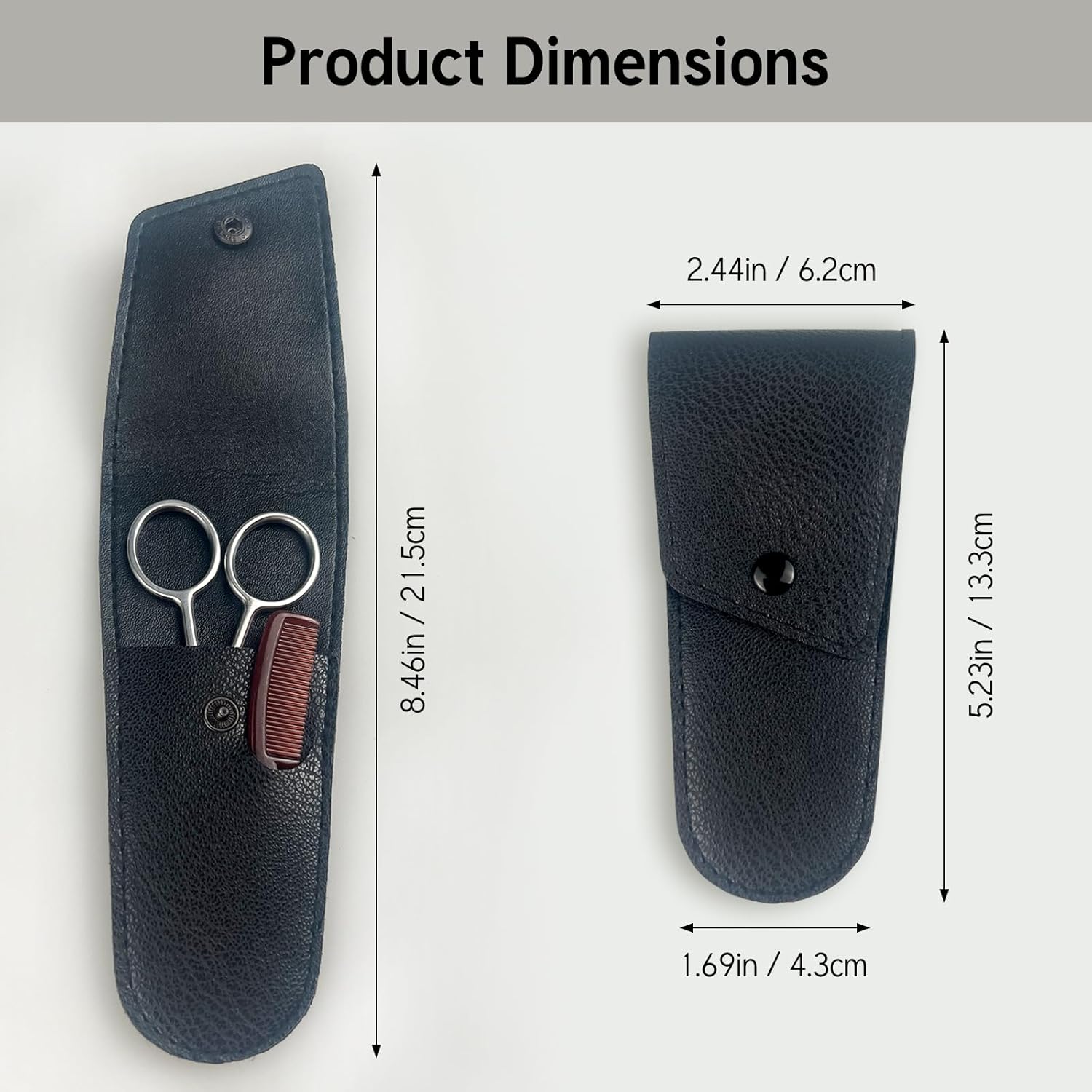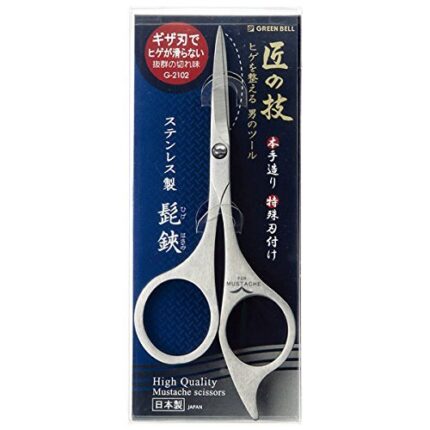When shopping on Amazon, one of the first things customers look at when deciding whether to purchase a product is the star rating. The star rating is a quick and easy way to gauge the overall satisfaction of previous customers with the product. But have you ever wondered how Amazon calculates this overall star rating?
Amazon doesn’t just take a simple average of all the star ratings given by customers. Instead, their system takes into account a variety of factors to ensure that the overall star rating is a true reflection of the product’s quality. One of the key factors Amazon considers is the recency of the review. Reviews that are more recent are given more weight in the calculation of the overall star rating. This is because Amazon wants to ensure that the star rating is based on the most up-to-date feedback from customers.
Another important factor that Amazon considers is whether the reviewer actually purchased the item on Amazon. Reviews from verified buyers are given more weight in the calculation of the overall star rating. This helps to ensure that the star rating is based on genuine feedback from customers who have actually used the product.
In addition to these factors, Amazon’s system also analyzes reviews to verify trustworthiness. This means that reviews that are deemed to be suspicious or fake are not factored into the calculation of the overall star rating. Amazon uses a variety of algorithms and techniques to identify and filter out fake reviews, ensuring that the star rating is based on genuine feedback from real customers.
Overall, Amazon’s system for calculating the overall star rating is designed to provide customers with an accurate and reliable representation of a product’s quality. By taking into account factors such as recency, verification of purchase, and trustworthiness of reviews, Amazon ensures that the star rating is a true reflection of the customer experience. So next time you’re shopping on Amazon, you can trust that the star rating is a reliable indicator of the product’s quality. When shopping on Amazon, one of the most important factors to consider when making a purchase is the overall star rating of a product. But did you know that there is more to it than just a simple average? Amazon’s system takes into account various factors to calculate the star rating and percentage breakdown by star, ensuring that you get a comprehensive view of the product’s reviews.
One of the key factors that Amazon considers when calculating the star rating is the recency of the reviews. A recent review is given more weight than an older one, as it provides a more up-to-date perspective on the product. This helps to ensure that you are getting the most current information when making a purchasing decision.
Another important factor that Amazon looks at is whether the reviewer actually purchased the item on Amazon. This helps to verify the authenticity of the review and ensures that you are getting feedback from genuine customers who have hands-on experience with the product. This level of trustworthiness is crucial when making a purchase online, as it helps to filter out fake or biased reviews.
In addition to these factors, Amazon’s system also analyzes the content of the reviews themselves to determine their relevance and helpfulness. This helps to ensure that the star rating accurately reflects the overall sentiment of the customers who have purchased and used the product. By taking all of these factors into account, Amazon is able to provide you with a more accurate and reliable star rating for each product.
So next time you’re shopping on Amazon, be sure to take a closer look at the star rating and percentage breakdown by star. By understanding how Amazon calculates these ratings, you can make more informed purchasing decisions and ensure that you are getting the best possible product for your needs. When shopping on Amazon, one of the most important factors to consider is the overall star rating of a product. This rating is a quick and easy way to gauge the quality and satisfaction of a product based on feedback from other customers. However, it’s important to understand that the star rating is not the only factor to consider when making a purchase decision.
At Amazon, the star rating is calculated based on a number of factors, including the average rating given by customers who have purchased the product, as well as the percentage breakdown by star. This breakdown provides a more detailed look at how many customers gave the product a 5-star rating, 4-star rating, and so on.
It’s important to note that the star rating is not a simple average of all the ratings given by customers. Instead, Amazon’s system takes into account the recency of the reviews and whether the reviewer actually purchased the item on Amazon. This helps to ensure that the star rating is accurate and reflects the most up-to-date feedback from verified customers.
In addition to the star rating, Amazon also analyzes reviews to verify the trustworthiness of the feedback. This helps to weed out fake or biased reviews, giving customers a more reliable source of information when making a purchase decision.
Overall, when shopping on Amazon, it’s important to consider the overall star rating of a product, but also take into account the percentage breakdown by star and the trustworthiness of the reviews. By doing so, you can make more informed decisions and choose products that are most likely to meet your expectations. When shopping on Amazon, one of the most important factors to consider when making a purchase is the overall star rating and percentage breakdown. This information can give you a good idea of the quality and satisfaction level of a product, helping you make an informed decision before adding it to your cart.
At Amazon, the star rating system is a valuable tool for both shoppers and sellers. The star rating is based on customer reviews and provides an overall snapshot of how satisfied customers are with a particular product. But how exactly is the star rating calculated?
To calculate the overall star rating, Amazon’s system takes into account a variety of factors. One of the key factors is the recency of the review. More recent reviews are given more weight in the calculation, as they provide a more up-to-date reflection of the product’s quality and performance.
Another important factor is whether the reviewer actually purchased the item on Amazon. Reviews from verified buyers are typically more trusted and reliable, as they are based on firsthand experience with the product. Amazon’s system also analyzes reviews to verify their trustworthiness, looking for patterns of fake or biased reviews that could skew the overall rating.
In addition to the star rating, Amazon also provides a percentage breakdown by star. This breakdown gives you a more detailed look at how many customers gave the product each star rating, allowing you to see at a glance the distribution of ratings and make a more informed decision.
Overall, the star rating and percentage breakdown on Amazon are valuable tools for shoppers looking to make smart purchasing decisions. By considering these factors and reading reviews carefully, you can feel confident in your choice and avoid any potential buyer’s remorse. So next time you’re browsing Amazon for that must-have item, be sure to check the star rating and percentage breakdown before hitting “add to cart.” When shopping on Amazon, one of the key factors to consider when making a purchase is the overall star rating of a product. The star rating is a quick and easy way to gauge the quality and satisfaction level of a product based on the experiences of other customers. However, it’s important to remember that the star rating is just one piece of the puzzle when it comes to making an informed decision.
At Amazon, the star rating is calculated based on a variety of factors, including the number of reviews and the average rating given by customers. This helps to provide a comprehensive overview of the product’s performance and quality. But what about the percentage breakdown by star? This is another important aspect to consider when evaluating a product’s overall rating.
The percentage breakdown by star gives you a more detailed insight into how customers have rated the product. For example, a product may have an overall rating of 4 stars, but when you look at the percentage breakdown, you may see that a majority of the ratings are 5 stars, with only a small percentage of lower ratings. This can help you understand the overall sentiment towards the product and whether it is likely to meet your expectations.
When analyzing reviews to verify trustworthiness, Amazon takes into account the recency of the review and whether the reviewer actually purchased the item on Amazon. This helps to ensure that the reviews are genuine and reliable, giving you peace of mind when making a purchase.
In conclusion, when shopping on Amazon, it’s important to consider not only the overall star rating of a product but also the percentage breakdown by star and the trustworthiness of the reviews. By taking these factors into account, you can make a more informed decision and choose the best product for your needs. When shopping on Amazon, one of the most important factors to consider is the overall star rating of a product. This rating is determined by customer reviews and can provide valuable insight into the quality and performance of an item. However, it’s important to understand that the star rating is not the only factor to consider when making a purchase.
To calculate the overall star rating on Amazon, the system takes into account a variety of factors. One of the key considerations is the recency of the review. Reviews that are more recent are given more weight in the calculation, as they are likely to be more reflective of the current state of the product. Additionally, the system looks at whether the reviewer actually purchased the item on Amazon. Reviews from verified purchasers are considered more trustworthy and are given more weight in the overall rating.
In addition to the star rating, Amazon also provides a percentage breakdown by star. This breakdown shows the distribution of reviews across different star ratings, giving shoppers a more detailed look at customer satisfaction. For example, a product may have a 4-star rating, but the breakdown may show that a majority of reviews are 5-star ratings, indicating that the product is highly rated by customers.
It’s important for shoppers to consider both the overall star rating and the percentage breakdown when evaluating a product on Amazon. While a high star rating is a good indication of quality, it’s also important to look at the distribution of reviews to get a more comprehensive understanding of customer satisfaction.
In conclusion, when shopping on Amazon, it’s important to look beyond just the overall star rating of a product. By considering factors like the recency of reviews and the percentage breakdown by star, shoppers can make more informed decisions and choose products that best meet their needs. When shopping on Amazon, one of the most important factors to consider when deciding on a purchase is the overall star rating of a product. But did you know that there is more to it than just looking at the number of stars? In this blog post, we will discuss how Amazon calculates the overall star rating and why it is important to consider other factors as well.
Amazon’s star rating system is based on the average rating given by customers who have purchased and reviewed the product. However, this rating is not just a simple average of all the ratings. Amazon takes into account factors such as the recency of the review and whether the reviewer actually bought the item on Amazon. This helps ensure that the star rating is an accurate reflection of the product’s quality and performance.
In addition to the star rating, Amazon also provides a percentage breakdown by star. This breakdown shows the percentage of reviews that fall into each star category, giving you a more detailed look at how customers have rated the product. For example, a product with a 4-star rating may have a breakdown of 60% 5-star reviews, 30% 4-star reviews, and 10% 3-star reviews. This can help you see if the majority of customers are highly satisfied with the product or if there are common issues that buyers have experienced.
When considering the star rating of a product on Amazon, it is important to also take into account the number of reviews. A product with a 4.5-star rating based on only a few reviews may not be as reliable as a product with a 4-star rating based on hundreds of reviews. More reviews provide a more accurate representation of the product’s overall performance.
In addition to the star rating and review breakdown, Amazon also analyzes reviews to verify trustworthiness. This helps prevent fake or biased reviews from influencing the overall rating of a product. By considering all of these factors, you can make a more informed decision when shopping on Amazon.
In conclusion, when looking at the star rating of a product on Amazon, remember that it is not just a simple average. Consider factors such as the percentage breakdown by star, the number of reviews, and Amazon’s verification of trustworthiness. By taking these factors into account, you can ensure that you are making a well-informed purchase decision. When shopping on Amazon, one of the most important factors to consider when making a purchase is the overall star rating of the product. This rating is a quick and easy way to gauge the quality and satisfaction of a product based on the experiences of other customers. But did you know that there is more to the star rating than meets the eye?
At Amazon, the star rating is calculated using a complex algorithm that takes into account a variety of factors. To calculate the overall star rating, the system considers the average rating of all the reviews for a product. However, this is just the starting point.
The system also looks at the percentage breakdown by star. This means that not all star ratings are created equal. For example, a product with a 4-star rating from hundreds of reviews may be more trustworthy than a product with a 5-star rating from only a handful of reviews.
In addition, the system considers the recency of the reviews. A product that has a high star rating but hasn’t been reviewed in years may not be as reliable as a product with a slightly lower star rating but more recent reviews.
Another important factor that the system takes into account is whether the reviewer actually purchased the item on Amazon. This helps to ensure that the reviews are coming from genuine customers who have first-hand experience with the product.
Overall, the star rating on Amazon is a valuable tool for shoppers to quickly assess the quality and reliability of a product. By understanding how the star rating is calculated and what factors are taken into consideration, you can make more informed purchasing decisions and find the best products for your needs. When shopping on Amazon, one of the key factors to consider before making a purchase is the overall star rating of a product. This rating is a reflection of the opinions and experiences of other customers who have already bought and used the product. However, it’s important to note that the star rating is not the only thing to consider when determining the quality and reliability of a product.
At Amazon, the star rating is calculated based on a variety of factors, including the number of reviews, the average rating given by customers, and the recency of the reviews. This means that a product with a higher star rating may not necessarily be better than one with a lower rating if the number of reviews is significantly lower.
In addition to the star rating, Amazon also provides a percentage breakdown by star, which gives you a more detailed look at how customers feel about a product. For example, a product may have an overall rating of 4 stars, but when you look at the breakdown, you may see that a majority of the reviews are 5 stars, with only a few lower ratings dragging down the average.
It’s also important to consider the trustworthiness of the reviews themselves. Amazon has systems in place to analyze reviews and verify their authenticity, so you can have confidence that the ratings and opinions you see are from real customers who have actually purchased and used the product.
In conclusion, while the overall star rating is a helpful tool for quickly gauging the quality of a product, it’s essential to dig deeper and consider other factors such as the percentage breakdown by star and the trustworthiness of the reviews. By taking a more thorough approach to evaluating products on Amazon, you can make more informed purchasing decisions and ensure you are getting the best value for your money. When shopping on Amazon, one of the most important factors to consider before making a purchase is the overall star rating of a product. However, it’s important to understand that the star rating is not just a simple average of all the reviews. Amazon’s system takes into account various factors to determine the overall rating of a product.
One of the key factors that Amazon considers is the recency of a review. This means that more recent reviews are weighted more heavily in the overall rating calculation. This is important because products can change over time, and it’s important for shoppers to see the most up-to-date feedback from other customers.
Another factor that Amazon looks at is whether the reviewer actually purchased the item on Amazon. This helps to ensure that the reviews are coming from genuine customers who have actually used the product. Amazon has strict guidelines in place to prevent fake reviews, so you can trust that the reviews you see are from real customers.
In addition to these factors, Amazon also uses a sophisticated algorithm to analyze reviews and determine their trustworthiness. This helps to filter out any reviews that may be biased or unhelpful, ensuring that the overall rating is a true reflection of the product’s quality.
So next time you’re shopping on Amazon and looking at the star rating of a product, remember that it’s not just a simple average. Amazon takes into account various factors to ensure that the overall rating is accurate and trustworthy. Happy shopping! When shopping on Amazon, it’s important to take into consideration the overall star rating of a product to ensure you’re making a well-informed purchase. However, calculating this rating isn’t as simple as looking at a product’s average score. Amazon’s system takes into account various factors to determine the overall star rating and percentage breakdown by star.
One key factor that Amazon considers is the recency of a review. A more recent review will carry more weight in the overall rating calculation compared to older reviews. This is because Amazon wants to provide shoppers with the most up-to-date information on a product’s performance and quality.
Another important factor is whether the reviewer actually purchased the item on Amazon. Reviews from verified purchasers are given more weight in the rating calculation compared to reviews from non-verified purchasers. This helps to ensure that the reviews are coming from genuine customers who have actually used the product.
Amazon’s system also analyzes reviews to verify their trustworthiness. Reviews that are deemed spammy, fake, or biased are not factored into the overall rating calculation. This helps to maintain the integrity of the rating system and provide shoppers with reliable information on products.
So, the next time you’re browsing Amazon for a new product, take a closer look at the overall star rating and percentage breakdown by star. By understanding how Amazon calculates these ratings, you can make a more informed decision on your purchase and ensure you’re getting a product that meets your needs and expectations. When shopping online, one of the key factors that consumers look at when deciding on a product is the star rating and reviews. These ratings can provide valuable insights into the quality and performance of a product, helping shoppers make informed decisions. On Amazon, the star rating system is a popular tool that allows customers to rate products on a scale of 1 to 5 stars based on their satisfaction with the product.
However, it’s important to note that the overall star rating on Amazon is not simply a basic average of all the ratings given by customers. Amazon’s system takes into account various factors to calculate the overall star rating and percentage breakdown by star. This ensures that the rating truly reflects the overall sentiment of customers towards the product.
One of the key factors that Amazon considers when calculating the star rating is the recency of the reviews. More recent reviews are given more weight in the calculation, as they provide a more up-to-date reflection of the product’s performance. This means that a product with a high overall rating may still have a lower rating if recent reviews are negative.
Another important factor that Amazon takes into consideration is whether the reviewer actually purchased the item on Amazon. This helps to verify the authenticity of the review and ensure that it comes from a genuine customer who has used the product. Reviews from verified purchasers are given more weight in the calculation of the star rating, as they are seen as more reliable and trustworthy.
In addition to these factors, Amazon’s system also analyzes the content of the reviews to determine their trustworthiness. Reviews that are detailed, well-written, and provide specific information about the product are more likely to be considered in the calculation of the star rating. On the other hand, reviews that are vague, unhelpful, or appear to be fake may be disregarded in the calculation.
Overall, the star rating on Amazon is a valuable tool for customers to gauge the quality and reputation of a product. By taking into account factors such as recency, verification, and content of reviews, Amazon ensures that the star rating accurately reflects the overall sentiment of customers towards the product. So next time you’re shopping on Amazon, be sure to check the star rating and reviews to make an informed decision on your purchase. When shopping on Amazon, one of the most important factors to consider is the overall star rating of a product. But did you know that this rating is calculated using a complex algorithm that takes into account various factors? In this blog post, we’ll delve into how Amazon calculates star ratings and why it’s important to pay attention to them when making a purchase.
First and foremost, it’s essential to understand that the star rating on Amazon is not just a simple average of all the reviews a product has received. Instead, Amazon’s system takes into consideration the recency of a review, as well as whether the reviewer actually purchased the item from Amazon. This helps ensure that the star rating is as accurate and trustworthy as possible.
In addition to these factors, Amazon also analyzes reviews to verify their trustworthiness. This means that reviews from verified purchasers are given more weight than those from unverified sources. Amazon also looks for patterns in reviews, such as whether a product has received a sudden influx of positive or negative reviews, which could indicate potential manipulation.
So why is it important to pay attention to star ratings when shopping on Amazon? For starters, the star rating can give you a quick snapshot of how satisfied other customers have been with the product. A high star rating indicates that the majority of customers have had a positive experience, while a low star rating may be a red flag that the product has some serious flaws.
Furthermore, paying attention to star ratings can help you avoid falling victim to fake or manipulated reviews. By looking for products with a high number of reviews from verified purchasers, you can feel more confident that the star rating is a true reflection of the product’s quality.
In conclusion, when shopping on Amazon, it’s crucial to take the time to look at the star rating of a product and understand how it is calculated. By considering factors such as the recency of reviews, whether reviewers are verified purchasers, and the overall trustworthiness of reviews, you can make more informed decisions and avoid potential pitfalls. So next time you’re browsing Amazon for a new purchase, be sure to take a close look at the star rating – it could save you from buyer’s remorse.






















Reviews
There are no reviews yet.